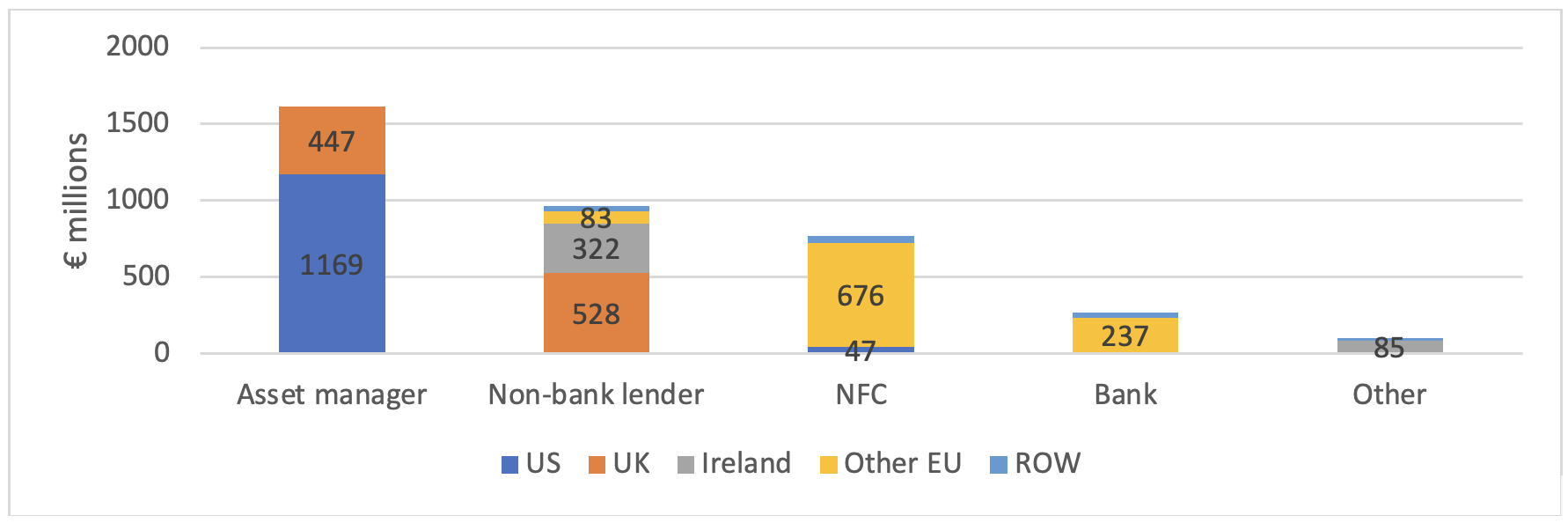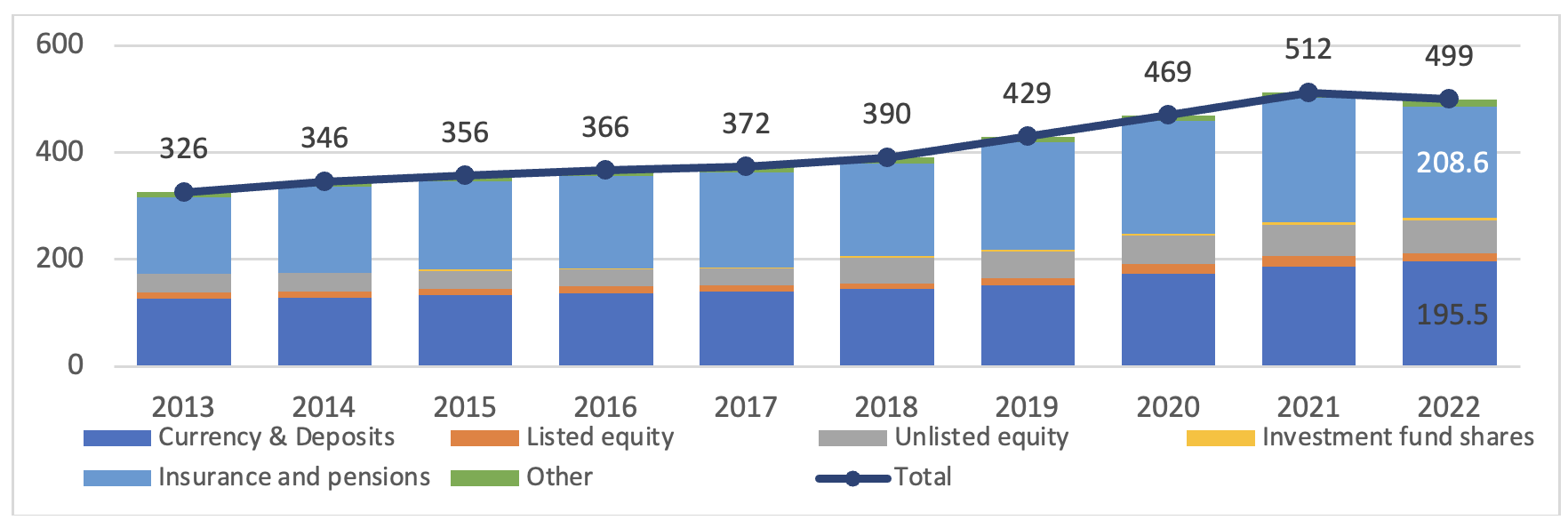4. Assessing the impact of the funds sector
Introduction
The ‘Ireland for Finance’ strategy, updated in 2022, recognised the valuable contribution that the international financial services sector makes to the economy.[14] There is an appreciation, albeit an incomplete understanding, of the impact that the investment fund sector has had on the real economy, including in Ireland. An Indecon report examining the direct and indirect economic impact of the funds sector in Ireland estimated that the sector generated €9.82 billion in revenue in 2020.[15] The funds and asset management sector also has an important role to play in supporting investment in the economy and savings plans for individuals.
Relevant Terms of Reference
- Assess how the funds sector directly and indirectly contributes to the economy, with particular reference to employment, revenues and regional development
- Assess the role the sector can play in deepening Ireland’s capital markets and in particular supporting domestic SME’s access to finance
- Assess how the sector assists in meeting wider Government policy objectives in areas such as pensions, long-term savings and investment in domestic enterprises and infrastructure
Economic Impact of the Sector
The Indecon report, commissioned by the Irish Funds Industry Association (“Irish Funds”), estimated that 17,273 full-time equivalent (FTE) persons were directly employed in investment funds and asset management related enterprises in Ireland. The sector employs a wide range of highly skilled individuals who provide services to enable the establishment, sale, administration and oversight of funds (both Irish and non-Irish domiciled). Additionally, the report found that the industry made substantial contributions to the Exchequer, with direct tax returns of over €914 million estimated in 2020.
The Indecon report also highlighted the continued regionalisation of the Irish investment funds and asset management sector, with almost half of the counties now home to at least one office location within the industry. The increased regional spread was evidenced by the fact that employment outside of Dublin accounted for 38.3 per cent of employment in the sector in 2020, up from 27.9 per cent in 2018.
Supporting Investment
The funds and asset management sector is part of the financial ecosystem which supports funding for domestic enterprises, including SMEs, both in terms of debt and equity. Asset managers can help private companies to grow and support the growth and development of public companies.
The Central Bank of Ireland’s Market Based Finance Monitor estimated that AUM of Irish-domiciled NBFIs totalled €5.2 trillion in late 2021.[16] The authors estimated that just €33 billion were Irish real-economy investments, predominantly at commercial real estate investment funds and equity funds. A 2021 study which used the Central Bank’s Central Credit Register found that the NBFI share of SME lending in 2019 and 2020 ranged from 40 per cent of credit to the real estate sector to under 10 per cent of credit to sectors such as hotels and restaurants and agriculture.[17] On aggregate, an estimated 28 per cent of lending to Irish SMEs in 2020 was from NBFIs. The study also identified the business models of lenders, estimating that the vast majority of NBFI lending to Irish SMEs was provided by property lenders, leasing companies and asset finance companies.
The sector is expected to play a big role in the financing of a transition to more sustainable business model.
|
Chart 10. Source of New Lending to SMEs by Non-bank Lenders, 2019-2020 |
|
|
Source: Central Bank of Ireland |
Supporting Savings
The funds and asset management sector plays an important role in the financial system as it facilitates the accumulation of savings by individuals and institutions by channelling this private funding into the economy. A very small proportion of savings by Irish residents is classified as being held in investment funds - €62 billion - compared to €196 billion in deposits and €209 billion in insurance and pension products.
|
Chart 11. Savings and Investments in Ireland |
|
|
Source: Central Bank of Ireland |
Questions
- Where relevant, detail how your organisation, or the wider sector, contributes to the economy with particular reference to employment, revenues and regional development.
- What role can the sector can play in deepening Ireland’s capital markets and, in particular, supporting retail investors access to investment opportunities and domestic SME’s access to finance? What measures can be taken or supported (if underway) to meet this objective?
- What role can the sector play in meeting wider Government policy objectives in areas such as investment in domestic enterprises and infrastructure? What measures can be taken or supported (if underway) to meet these objectives?
- What role can the sector play in meeting wider Government policy objectives in areas such as pensions and long-term savings? What measures can be taken or supported (if underway) to meet these objectives?
- What role does the sector play in supporting investment in the economy and the savings needs of investors in the EU, and outside the EU, where relevant?
- [14] Department of Finance Update to ‘Ireland for Finance’: the strategy for the development of Ireland’s financial services sector, extended to 2026 (2022)
- [15] Indecon Assessment of Economic Impact of the Funds & Asset Management Industry on the Irish Economy (2021)
- [16] Central Bank of Ireland Market Based Finance Monitor 2021 (2021)
- [17] Heffernan, T. et al. The role of non-bank lenders in financing Irish SMEs (2021)

